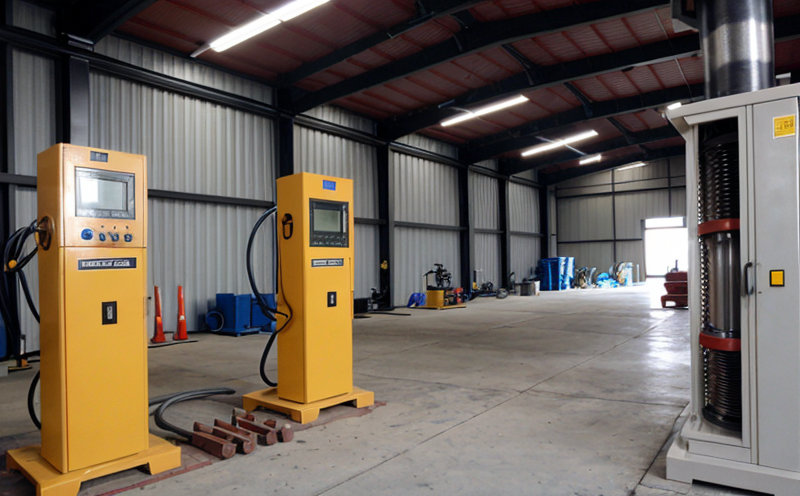ISO 3037 Edge Crush Resistance Verification
The ISO 3037 Edge Crush Resistance (ECR) test is a critical measurement in packaging testing, especially for corrugated materials. This test evaluates the mechanical integrity and structural strength of packaging materials under compressive forces, ensuring that they can withstand the stress encountered during shipping, handling, and storage.
The ECR test is particularly important for industries reliant on corrugated boxes, such as pharmaceuticals, electronics, and food & beverage. The test measures how much a sample of corrugated board can resist bending or crushing at its edges before it fails. This property is crucial because the integrity of packaging directly impacts product safety and quality.
The test involves cutting a standard-size specimen from the corrugated material, typically 150 mm long and 25 mm wide (ISO 3037-1). The specimen is then clamped at one end, while pressure is applied to the free edge until it crushes. The force required to cause this failure is recorded in Newtons per meter (N/m).
The ECR test is part of a broader suite of packaging tests that ensures compliance with international standards and regulations. By conducting this test, manufacturers can verify that their corrugated boxes meet the necessary strength requirements set by ISO 3037-1.
Understanding the practical application of ECR testing involves considering real-world scenarios where packaging materials are subjected to various stresses. For instance, in the pharmaceutical industry, a strong and robust box is essential for protecting medication from damage during transport. Similarly, in electronics manufacturing, corrugated boxes must be able to withstand shock and vibration without compromising the integrity of their contents.
The ECR test not only ensures product safety but also plays a significant role in reducing waste and improving efficiency within packaging processes. By identifying weak points early on, manufacturers can optimize material usage and reduce costs. Moreover, compliance with ISO standards enhances brand reputation and customer trust.
In summary, the ISO 3037 ECR test is an indispensable tool for quality managers, R&D engineers, and compliance officers working in packaging industries. It provides a clear measure of corrugated material strength, ensuring that products are protected during transportation and storage while minimizing environmental impact through efficient material use.
Benefits
The ISO 3037 ECR test offers numerous benefits to businesses in the packaging sector. Primarily, it ensures that corrugated boxes meet stringent strength requirements, thereby enhancing product protection during transportation and storage. This translates into improved product quality and reduced damage rates.
Compliance with international standards like ISO 3037-1 also enhances a company’s reputation and trustworthiness among customers and regulatory bodies. Additionally, the test helps in optimizing material usage, reducing production costs while minimizing environmental impact.
R&D engineers can use ECR testing results to identify areas for improvement in their packaging designs, leading to more efficient processes and better-performing products. For quality managers and compliance officers, the test provides a reliable method of ensuring that all packaging materials meet industry standards before being used in production.
In summary, the ISO 3037 ECR test offers substantial advantages for businesses looking to enhance their product protection, operational efficiency, and environmental sustainability. By incorporating this test into their quality assurance protocols, companies can ensure that their corrugated packaging meets high standards of strength and integrity.
Environmental and Sustainability Contributions
The ISO 3037 ECR test plays a vital role in promoting sustainability within the packaging industry. By ensuring that corrugated boxes are strong enough to withstand shipping stress, this test helps reduce waste by preventing premature failure of packaging materials.
Stronger and more durable packaging can lead to reduced material usage, as manufacturers can design lighter yet equally effective boxes without compromising on strength. This approach not only conserves resources but also lowers the carbon footprint associated with production processes.
The test contributes to sustainability by enabling better-informed decisions regarding material selection and design optimization. For instance, it allows engineers to choose materials that offer optimal performance while minimizing environmental impact. Additionally, compliance with ISO standards ensures that packaging is recyclable or easily repurposed at the end of its lifecycle.
In summary, the ISO 3037 ECR test supports sustainable practices by enhancing product protection without increasing resource consumption. It promotes a circular economy model where materials are used efficiently and responsibly throughout their life cycle.
Competitive Advantage and Market Impact
The ISO 3037 ECR test provides packaging manufacturers with a competitive edge by ensuring that their products meet the highest standards of quality and performance. Compliance with international standards like this not only enhances brand reputation but also differentiates companies in an increasingly crowded market.
By verifying that corrugated boxes are strong enough to protect contents during transportation, businesses can build trust with customers and regulatory bodies. This trust translates into better customer satisfaction and increased loyalty, which are crucial factors for long-term success.
The test also allows manufacturers to optimize their production processes by identifying areas for improvement in material usage and design. For example, understanding the exact crush resistance needed for specific applications can help reduce waste and lower costs. This efficiency translates into reduced operational expenses, making companies more profitable while maintaining high-quality standards.
In summary, the ISO 3037 ECR test contributes significantly to a company’s competitive advantage by ensuring product quality, enhancing brand reputation, and driving operational efficiencies. It helps businesses stay ahead of the curve in an ever-evolving market landscape focused on sustainability and customer satisfaction.





